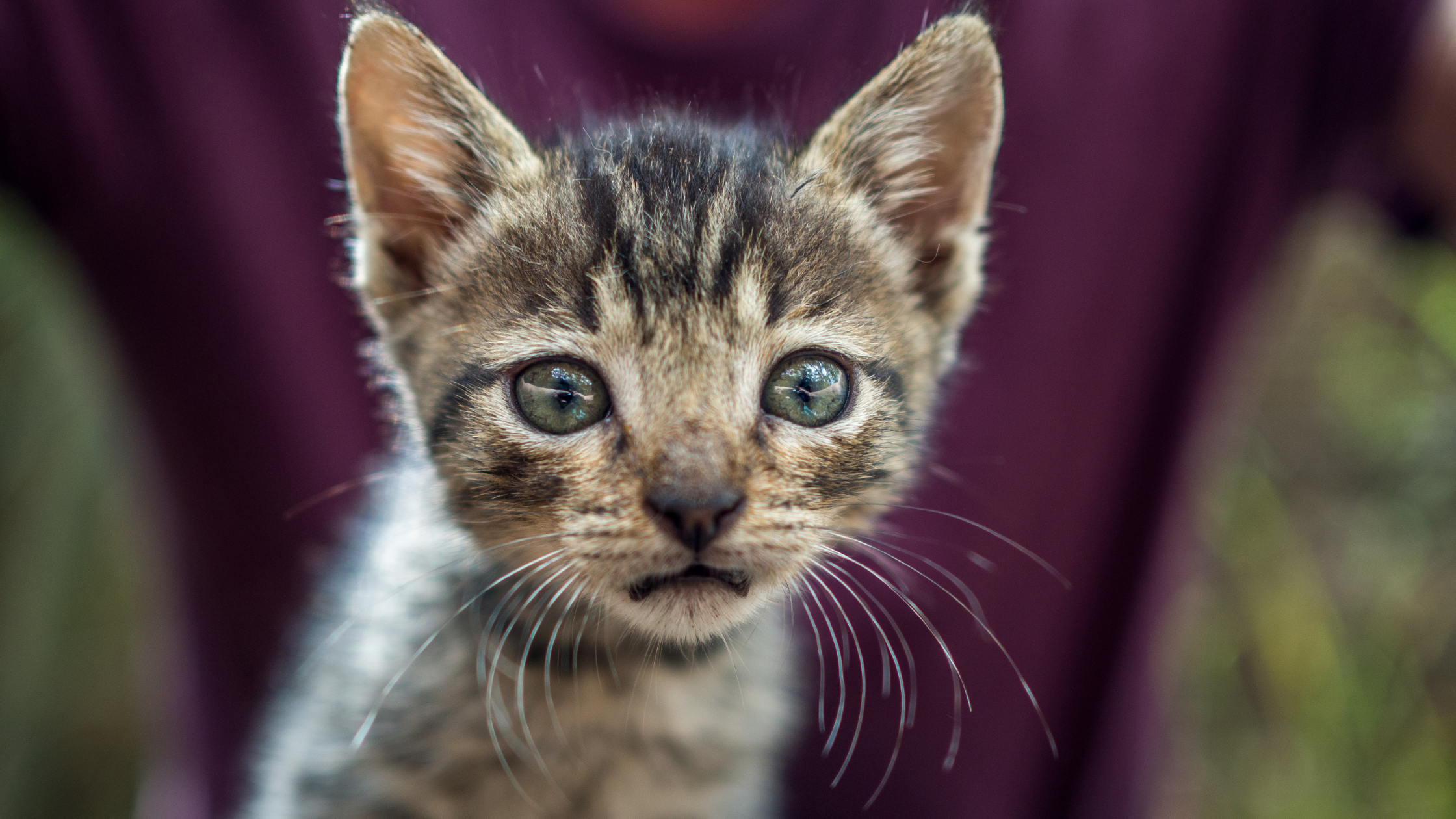A foster home bridges a cat's previous life to their upcoming life with a forever family.
An environment similar to a home instead of a sanctuary is better for a cat. Felines, like people, need a safe place to thrive and live. Foster parents provide a place where cats can keep their guard down, where they don't have to worry about where to find food. A place that is safe at night, where they will be warm and dry. Many cats have been abused and neglected; they do not know what a loving home feels like. Foster homes help cats learn what it means to eat, sleep, and play in a safe area.
Fostering implies that you collaborate with a sanctuary or rescue center as a volunteer yourself, your heart, and home to a feline in need. When you become a foster parent, you will bring a cat into your house for a limited time and play a significant role in helping that cat prepare for adoption.
Foster homes also play a vital role in relieving stress from an often-overburdened rescue system.
You agree to welcome a homeless cat into your home when you foster a cat. You agree to give them love, care, and attention for a fixed period or until the cat is adopted.
Why do we need foster homes?

There are reasons upon reasons why a cat might need foster care. The most common are the following:
- A rescue team doesn't have a physical room and depends on foster homes to care for cats until their fur-ever homes are found.
- A cat is recovering from a surgical procedure, illness, or injury and needs a refuge to recuperate.
- A kitten is not old enough to be adopted and needs a safe place to stay until they are ready to go to a forever home.
- A cat shows signs of stress and anxiety, such as pacing or hiding in the sanctuary.
- A cat has no experience living in a home or has not had much contact with people, and it needs to learn how to interact socially.
- The sanctuary lacks room for adoptable felines.
Why should I foster a cat?

Fostering a sanctuary animal is a most fulfilling experience. The main reason for foster care is to offer temporary care and home for cats due to congestion in the shelter or to help pets whose current conditions are not suitable in a shelter setup. Many cats are overcrowded in sanctuaries throughout the country, so finding foster homes don't just save the foster cat's life but the lives of those who will take their places. By temporarily taking a pet in need, you're:
- Freeing up a spot on a shelter or rescue so they can absorb an additional cat.
- Give your foster cat the time it requires to be prepared for adoption.
- Helping the rescue center learn more about the foster cat so that they can be in the best home possible.
- Helping to socialize the cat to a home environment and possibly getting the cat used to being around other pets and other people.
Common types of cats that require foster care program

Neonates: These delicate lives require round-the-clock care that several rescue centers cannot offer. You might need special training to supply specialized care.
Young Kittens: Helping young kittens learn how to walk and play can be a magical experience! As fur babies develop, they need a safe place to learn etiquette and proper behavior to become the best member of the family that they can be.
Cats in recovering from medical care: Sanctuaries are swamped with sick and injured felines every day. Foster treatment often accelerates recovery by offering a peaceful and conducive area.
Anxious Cats: Imagine that you lost your family and home and suddenly found yourself in a kennel. You used to have a home, people that gave you treats and toys, and now you have a small, rectangular cage where you spend days upon days of a day hearing a cacophony of barks, meows, and bustling people. Some cats can't adapt well and begin to break down psychologically. Temporary homes are like a holiday when you are stressed, and long-term foster care is a very humane way for cats to transition from a previous home to a new and permanent family.
Emergency: In times of crisis, shelters might be bewildered by the number of cats in need. Emergencies can follow extreme weather conditions such as a hurricane, a sudden or extensive wildfire, or even a pandemic. Emergency fostering promotes short-term security to minimize the need for sanctuaries to create space through euthanasia.
If sanctuaries need more information regarding a cat: Organizations can't learn everything about a pet in the shelter environment. Foster caretakers can learn as much as possible about the feline in their care and share that details with the shelters or rescue groups to provide more insights as the cat moves into their new permanent home.
Hospice Care: It is cruel to let a cat spend their whole life in an impersonal sanctuary setting if we can help it. As fantastic as your local shelter is, a home is undoubtedly better. A foster house keeps a cat in a comfortable home setting for as long as possible. Sometimes, a cat expected to only last mere weeks winds up staying longer due to the love and proper care received in a foster home.
Rescues and shelters around the world need our assistance. Talk with organizations in your area to know more about their foster program and the help they need.
Products you'll need

If you are now aboard the foster train, here are some products that you will need to help your foster cat transition smoothly:
- At least one dish for food and one for water. Stainless steel or ceramic works best.
- Dry cat food. Cats are typically fed dry food unless a particular diet regimen is needed.
- A collar with an ID tag. Even though foster cats are already microchipped, they still need an ID tag if they run away from your home.
- A quiet location to sleep. Old blankets or towels work well if you don't have a cat bed.
- An open litter box. Make sure to provide a clean litter box and that it is an ideal size for the feline.
- Cat Litter. Foster parents are encouraged to use clumping litter unless you're provided with other instructions.
- Scratching posts. Try different kinds to see which one your foster cat prefers.
- Treats. Giving treats is an excellent way to train and establish a good connection with your foster cat.
- Cat toys. The best toys are durable and secure, without little bits that will be hazardous if swallowed.
- Grooming products. A clean cat has a better opportunity of getting embraced.
Catproofing your residence

Foster cats come from a shelter setting, and even if they previously stayed in a home, we never know how they will react in a new house. Before bringing home a new foster cat, you need to evaluate the area where you are to keep the cat. Remove anything hazardous or unwanted for the feline to eat on and firmly close any cabinets that the foster cat could get in. Cats like to climb up on racks or bookcases, so you need to remove anything your cat can tear down. People's food and chemicals can be highly unsafe if felines consume them, so keep them in an area that the foster cat can not access.
Never underestimate your foster cat's abilities. Here are some added suggestions for catproofing your home:
- Keep all wastebasket covered and keep them inside a storage room. Don't neglect the bathroom trash can.
- Keep the toilet covers shut.
- Keep both pet and people's food out of reach.
- Move house plants in areas your cat can't reach. Numerous house plants are toxic to felines, and they like to chew on them.
- Ensure aquariums or cages that house small pets like hamsters, birds, or fish are safe and beyond the reach of your foster cat.
- Secure all electrical and phone cords. Cats may get tangled or chew them.
- Remove medications, creams, or cosmetics from any reachable surface.
- Secure clothing with buttons or strings can be harmful to your foster feline if eaten.
- Secure souvenirs or prized possessions that your foster cat could knock down.
Choosing a foster cat

Your foster care provider will help you choose a foster feline that meets your requirement. They will do their best to match you with a cat who fits your lifestyle and routine.
When you select a foster cat, they will arrange an appointment so you can grab the cat as well as any type of products that you will need.
Be sincere: If you are not comfortable with anything about the pet you might be fostering, please inform the foster care volunteer before taking the pet home. The foster planner will satisfy you at the fostering center and present you to the cat.
If you cannot keep your foster cat, please inform the foster coordinator right away. The sanctuary may not have the ability to remove the cat instantly since there may not be a space available.
Since shelters don't always know a foster cat's background or tolerance, you are encouraged to teach your kids how to act responsibly and respectfully around your foster feline. Here are some things to remind your kids:
- Leave the foster cat alone when they are eating or sleeping. Some cats might nip or attack if bothered while eating or alarmed while sleeping.
- Do not tease or provoke up the foster feline.
- Don't chase the foster animal around your home. It might scare him.
- Pick up the foster pet cat only when an adult is available to help. Cats can be afraid when picked up and can scratch your kid with their sharp nails, although they do not mean to hurt people.
- Be careful when opening and closing doors to not mistakenly let the foster cat outside.
It is bittersweet when your foster pet finds its forever home. Knowing that you will again open your home to a new foster pet in need helps make goodbyes more bearable. Rest assured, there is always another cat waiting to be fostered!
It also helps to know that your foster cat will be loved and cared for in their forever home. Fostering is so rewarding as well!
We hope this blog makes you want to foster a cat and change their lives for the better!
























